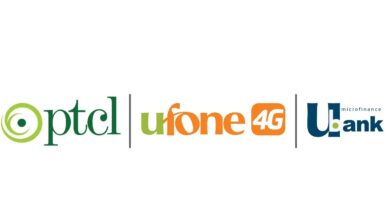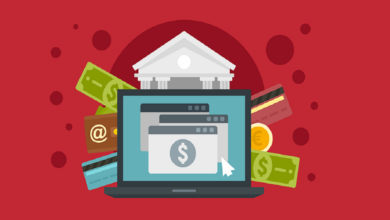Dormant accounts leading us towards international financial exclusion

In the context of developing countries like Pakistan, financial inclusion is generally considered to be more about broadening the access of formal financial services (payments, savings, loans, insurance products etc.) to individuals and Small & Medium Enterprises (SMEs) that are currently out of the banking system. However, access is step one; quality of access to the affordable products and services that meet different segments’ unique needs would be the driving force for the uptake and usage of these services. Without offering any value to the masses, access might create a new problem in the form of inactive banking accounts. The Unbanked: A hundred-million question.
Dormant accounts leading us towards international financial exclusion
In Pakistan, the unbanked population is estimated at 100 million adults, mostly women. According to State Bank of Pakistan’s Access to Finance Survey (2015), the formally banked individuals (those having transaction accounts, either conventional or mobile money accounts) were 23 percent of the adult population. More recently, the World Bank’s Findex database estimated the financially-included population at 21 percent of Pakistani adults, for 2017.
Digital Channels to the Rescue
Both those datasets highlight the stark fact that at least three-quarters of Pakistan’s adults are excluded from the formal financial system. The gender gap in account ownership is one of the widest in the world. The country also significantly lags behind the averages for South Asia and the lower-middle-income economic category (see the graph above). As per Financial Inclusion Insights (FII) Survey, significant preconditions to increase financial Inclusion using Digital Financial Services (DFS) are present in Pakistan; 95% adults have the necessary ID, 77% have mobile phone access and are aware of Mobile Money, numeracy skills are at higher side but financial literacy is under 20%.
Successive Pakistani governments have focused in the last decade to improve financial inclusion. Learning from the experience of mobile payment operators in countries like Kenya, an effort has been focused on the ‘digital’ potential that exists in Pakistan, thanks to a reasonable density of mobile phones. Indeed, technology-based payments are not only fast and cost-effective as opposed to paper-based transactions and are more secure due to multiple encryptions.
According to McKinsey Global Institute (MGI)’s report “Digital Finance for all: Powering inclusive growth in emerging economies, 2016”, the cost of offering customers digital accounts can be up to 90 percent lower than using traditional bank branches. This, in turn, enables service providers to extend access to financial services for unbanked and underbanked individuals who would otherwise not be profitable prospects.
A decade of digital focus
Branchless banking regulations were introduced in 2008[7] by SBP as part of Pakistan’s Financial Inclusion Program. The idea was to provide an entry point in the financial system to tens of millions of folks who had a cellular subscription but did not have a bank account. Moreover, scaling mobile financial services was cost-effective for increasing outreach as compared to brick and mortar investments in the form of bank branches. The experience has been largely positive. As of June 2018, nearly 40 million mobile accounts had been opened by almost a dozen operators. Further, as a sign of growing incidence of mobile wallets, the concentration of over-the-counter transactions in overall volume and value has been declining since 2017.
In 2015, a detailed policy blueprint emerged in the form of the National Financial Inclusion Strategy (NFIS). The strategy envisaged a target of having 50 percent adults having transaction accounts by 2020, besides raising percentage of women with transaction accounts to 25 percent, from 2.9 percent in 2014. The focus was on digital transaction accounts, as a means to fast-track the mainstreaming of exclude segments in the formal financial system.
The current government has taken the baton and revised the strategy in 2018 and termed it as ‘enhanced’ NFIS. Unlike the 2015 NFIS, the latest version explicitly states the target of having 65 million digital accounts by 2023. The key measures identified include the development of Micro Payment Gateway (MPG), a project by Karandaaz and SBP, for retail payments in a cost-effective and efficient manner. The government is also aiming for complete digitization of all government payments and receipts, besides digitizing departments like Pakistan Post and the Central Directorate of National Savings. By 2023, 100% digitalization of Government payments and receipts along with back-end automation is part of the new NFIS. Karandaaz Pakistan is working jointly with major government stakeholders to digitize Person to Government (P2G) and Government to Person (G2P) payments.
Digital opportunity; real challenges
While the potential for digital transaction accounts looks great, several barriers exist in the way of adoption including socio-cultural barriers, consumer awareness and financial literacy. Despite a decade of reasonable policy focus on mobile accounts, the true potential of the DFS has yet to be actualized. Among those adults who send or receive domestic payments, cash-based transactions are still the preferred method, with only one in seven adults using the mobile phone to do it (see the graph above) The activity ratio of the Branchless Banking (BB) Accounts stands at 56%, by the end of FY18 total number of BB Accounts stood at 39 Million, out of which 22 Million accounts were actually active.
What about the rest who don’t have an account at all? Findex survey shows that nearly half of the unbanked individuals cited “insufficient funds” as the reason behind not opening an account. Perhaps it is time to acknowledge that efforts need to be made to understand the circumstances and needs of the financially-excluded population to design relevant products. Work is already underway. The barriers and opportunities are nuanced within the low-income segment. Recently published Bill & Melinda Gates Foundation’s Customer Segmentation Framework Report would enable digital financial service providers to develop modular products and services better suited to specific client segments especially at the bottom of the pyramid. A deep dive on women-focused customer segmentation analyses the profile of female consumers, their attitudes, and gender-specific barriers for financial inclusion. This public goodwill help practitioners identify market opportunities to address the chronic problem of low levels of adoption and use of digital financial products in Pakistan.
Recommended Read: JS Bank Becomes First Bank in Pakistan to Launch Self-Service Banking on WhatsApp
PTA Taxes Portal
Find PTA Taxes on All Phones on a Single Page using the PhoneWorld PTA Taxes Portal
Explore NowFollow us on Google News!






This staff article referenced financial literacy being 20% in Pakistan. How is financial literacy measured in Pakistan? Is the measurement approach consistent with measuring financial literacy in other countries? What entity(s) measure financial literacy?
John BaRoss
President
FINCCLUDE.org
(Financial Inclusion Now, Carrier Commerce Leading a Ubiquitous Digital Economy)